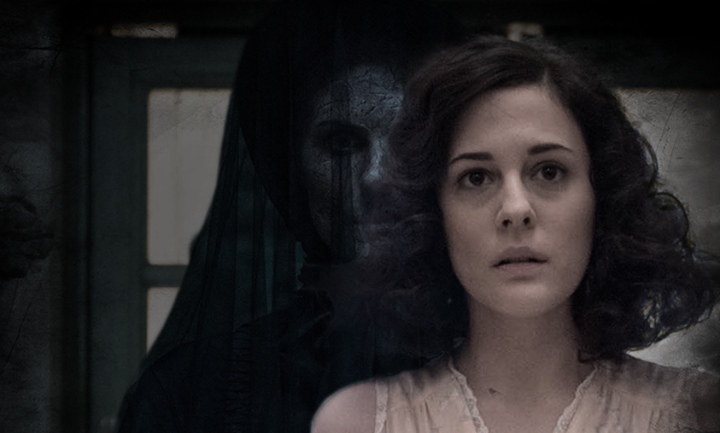
Written by Jon Croker
Directed by Tom Harper
UK, 2015
After 2012’s The Woman in Black became the highest grossing British horror film in 20 years, some sort of sequel or spin-off capitalising on that success seemed inevitable, even if the ending of director James Watkins and writer Jane Goldman’s adaptation of Susan Hill’s source novel didn’t exactly allow much leeway for star Daniel Radcliffe’s return. The solution for sequel Angel of Death: move the action forward a couple of decades from the Edwardian Era to 1941, thereby negating the need to retain any of the original players.
As German bombings terrorise London during the Blitz of World War II, a young schoolteacher, Eve (Phoebe Fox), and a headmistress (Helen McCrory, recognisable to younger viewers as Narcissa Malfoy in Radcliffe’s Harry Potter series) evacuate a group of children to the ‘safety’ of the countryside; one of the boys, Edward (the fantastically named Oaklee Pendergast), has just lost his entire family in the blazes the night before departure. And where in the countryside should they be assigned to? Why, it’s the old, run-down Eel Marsh House estate from the first film, conveniently cut off from the mainland by a causeway. Their arrival awakens the eponymous ghost, who takes a particular interest in mute, grief-stricken Edward, though is hardly fussy about picking off the surrounding children one by one and additionally playing mind games regarding Eve’s own child loss trauma (cue many a dream set in a maternity ward). The ghost is also hardly fussy about staying on that estate that’s seemingly meant to be her primary haunting spot, but that’s another matter almost as uninteresting as this entire film.
The Woman in Black was hardly a stellar horror film itself, but it at least had a couple of strong moments that thrived on use of silence, before sadly reverting to some lame jump scare tactics as it progressed. With a bunch of schoolchildren and several adults, which also includes young RAF pilot Harry (Jeremy Irvine), instead of one haunted protagonist, the noise levels are upped quite significantly. It’s hard to generate much suspense when the characters rarely stop blabbering, Edward aside, and screenwriter Jon Croker fails to make his cliché-ridden characters very convincing.
Clumsiness is the name of the game with Angel of Death, extending to director Tom Harper’s egregious overuse of cheap jump scares (I started counting, and the number went into double digits), all loud boos and sudden shrieking ghost faces appearing out of nowhere for a split second, only to vanish back into the shadows. You’ll start to wish the woman in black would hurry up and just off them already, she wastes her time so much.
To Angel of Death’s credit, there are a couple of bits of imagery that have a brief power in relation to the wartime setting (see one scare on a beach with barbed wire), and cinematographer George Steel’s work occasionally strikes, its even greyer palette than that of the first film suggesting an England well and truly drained. Unfortunately, the tedious content it supports leaves one viewing the film also drained; drained of all enthusiasm, engagement, and eventually the ability to stay awake.
— Josh Slater-Williams



